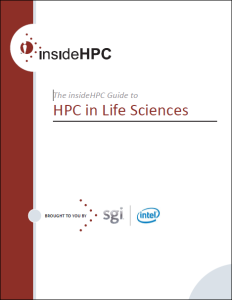Advances in computational biology as applied to Next Generation Sequencing (NGS) workflows have led to an explosion of sequencing data. All that data has to be sequenced, transformed, analyzed, and stored. The machines capable of performing these computations at one point cost millions of dollars, but today the price tag has dropped into the hundreds of thousands of dollars range. A large sequencing center might have 20 or 30 of these machines; a few larger organizations might have over 100. The aggregate cost is still so large it’s no wonder that labs both large and small want to feed these NGS systems a constant stream of new samples for sequencing on a 24×7 basis.
This is the 2nd of a 6 article series on the trends and technologies impacting the application of HPC in Life Sciences.
According to a Global and China Industry Research Report, with the advances in sequencing technology and a “dramatic” decline in sequencing costs, the sequencing market is growing rapidly. The report states that in 2013 the market size was about $4.6 billion, a 25% increase over the previous year. Continued growth in the field will boost the sequencing market to more the $10 billion by 2017.
But despite this and other equally optimistic sequencing market forecasts, there are still many problems to be overcome, many of them computational. NGS computational requirements have been outpacing computational advances as forecasted by Moore’s Law and the rapid rise of hard disk capacity as observed by Kryder’s Law.
Check back next week for the article on ‘Going from the Lab to the Data Center.’ If you prefer you can click here to download the insideHPC Guide to HPC in Life Sciences in a PDF courtesy of SGI and Intel.




